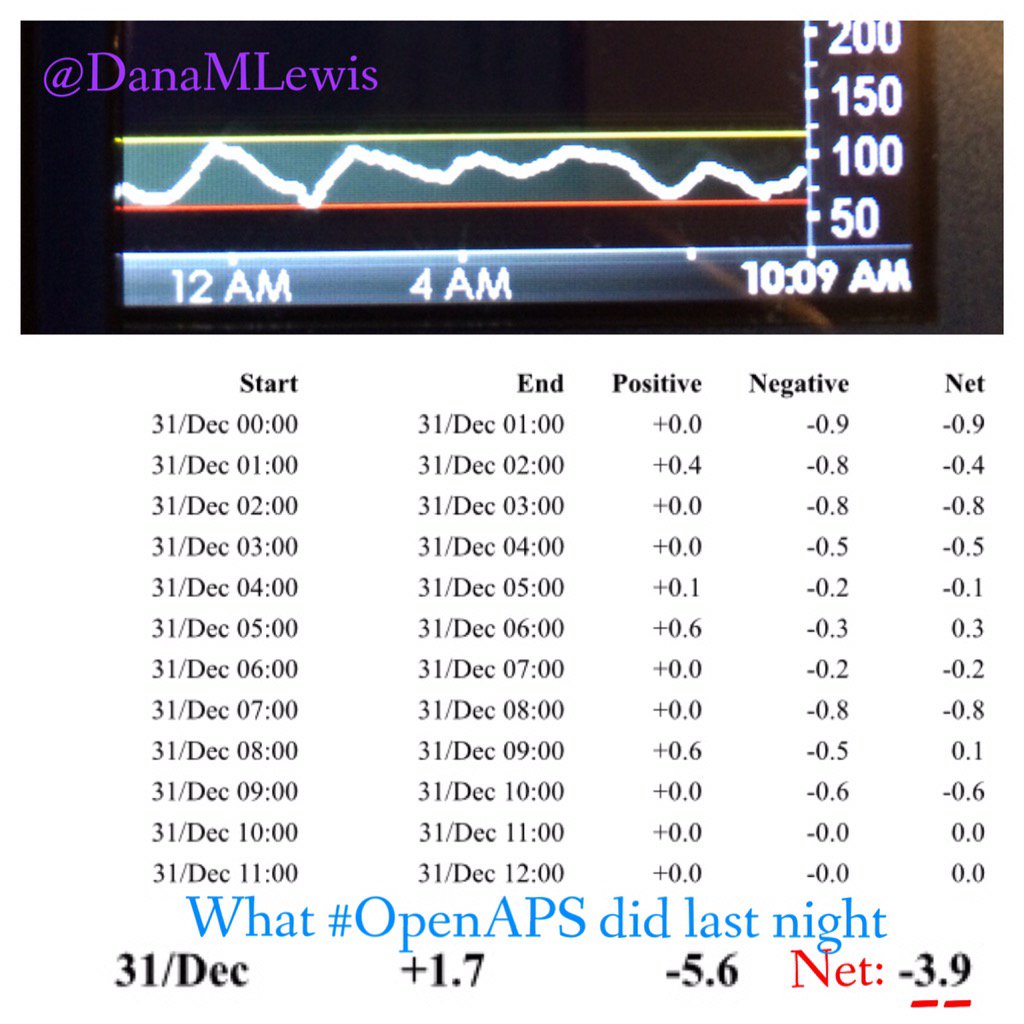- 41 new species are discovered by scientists every single day.
- The word "Scientist" first appeared in 1833.
- Scientists finally concluded that the chicken came first, not the egg, because the protein which makes egg shells is only produced by hens.
- A 10-Year-Old Accidentally Created in 2012 a New Molecule in Science Class: Tetranitratoxycarbon.
- "Sphenopalatine ganglioneuralgia" is the scientific term for brain freeze.
- A new scientific method called 'toxineering' turns venoms into painkillers.
- Scientists have developed a way of charging mobile phones using urine.
- Scientists can turn peanut butter into diamonds.
- Scientists have developed a microparticle filled with oxygen that can be injected into the blood stream, so we can live without breathing.
- The World's oldest known creature, a mollusc, was 507 years old until scientists killed it by mistake.
- A bolt of lightning is 5 times hotter than the surface of the sun.
- Eating salmon helps hair grow faster.
- During photosynthesis, plants emit light, called fluorescence, that humans can't see.
- Sunflowers can be used to clean up radioactive waste.
- It would take light 100,000 years to travel from one end of the Milky Way galaxy to the other.
- If you could fold a piece of paper 50 times, its thickness would exceed the distance from here to the Sun.
Science | The Way Of Life
Science is the intellectual and practical activity encompassing the systematic study of the structure and behavior of the physical and natural world through observation and experiment. It becomes the way of life in this world.
Labels
- Experiment (1)
- Facts (2)
- Science (3)
About Me
This page is maintained by Pathmapriya Visvanathan. Powered by Blogger.
Science Teaching should be done with hands on activity.
Followers
16 Science Facts
Wednesday, 18 May 2016 | By Unknown
How much paper can one tree make?
| By Unknown
Since trees are different sizes, it would be difficult to say how much paper comes from one tree. According to one paper manufacturer, however, a cord of wood measuring 4 feet by 4 feet by 8 feet or 128 cubic feet produces nearly 90,000 sheets of bond-quality paper or 2,700 copies of a 35-page newspaper.
- Source: http://www.infoplease.com/askeds/much-paper-one-tree.html
Science behind Hindu traditions
Friday, 22 April 2016 | By Unknown
1. Indian Customs 'Vs' Scientific Reasons
3. Joining both palms together to greet
 In Hindu culture, people greet each other by joining their palms - termed as “Namaskar.” The general reason behind this tradition is that greeting by joining both the palms means respect. However, scientifically speaking, joining both hands ensures joining the tips of all the fingers together; which are denoted to the pressure points of eyes, ears, and mind. Pressing them together is said to activate the pressure points which helps us remember that person for a long time. And, no germs since we don’t make any physical contact!
In Hindu culture, people greet each other by joining their palms - termed as “Namaskar.” The general reason behind this tradition is that greeting by joining both the palms means respect. However, scientifically speaking, joining both hands ensures joining the tips of all the fingers together; which are denoted to the pressure points of eyes, ears, and mind. Pressing them together is said to activate the pressure points which helps us remember that person for a long time. And, no germs since we don’t make any physical contact!
4. Why do Indian women wear toe rings?
Source: http://www.speakingtree.in/allslides/mysteries-explored-shocking-science-behind-hindu-traditions
Traditions in Hinduism were considered mainly as superstitions, but with the advent of science, it is becoming evident that these traditions are based on some scientific knowledge and moved from generations to generations as traditions. Though the common people did not know science in it, they were following it very faithfully over the years. This blog is an attempt to bring forward the science involved in these traditions and rituals.
2. Throwing coins into a river
The general reasoning given for this act is that it brings Good Luck. However, scientifically speaking, in the ancient times, most of the currency used was made of copper unlike the stainless steel coins of today. Copper is a vital metal very useful to the human body. Throwing coins in the river was one way our fore-fathers ensured we intake sufficient copper as part of the water as rivers were the only source of drinking water. Making it a custom ensured that all of us follow the practice.
3. Joining both palms together to greet
 In Hindu culture, people greet each other by joining their palms - termed as “Namaskar.” The general reason behind this tradition is that greeting by joining both the palms means respect. However, scientifically speaking, joining both hands ensures joining the tips of all the fingers together; which are denoted to the pressure points of eyes, ears, and mind. Pressing them together is said to activate the pressure points which helps us remember that person for a long time. And, no germs since we don’t make any physical contact!
In Hindu culture, people greet each other by joining their palms - termed as “Namaskar.” The general reason behind this tradition is that greeting by joining both the palms means respect. However, scientifically speaking, joining both hands ensures joining the tips of all the fingers together; which are denoted to the pressure points of eyes, ears, and mind. Pressing them together is said to activate the pressure points which helps us remember that person for a long time. And, no germs since we don’t make any physical contact!4. Why do Indian women wear toe rings?
Wearing toe rings is not just the significance of married women but there is science behind it. Normally toe rings are worn on the second toe. A particular nerve from the second toe connects the uterus and passes to heart. Wearing toe ring on this finger strengthens the uterus. It will keep it healthy by regulating the blood flow to it and menstrual cycle will be regularized. As Silver is a good conductor, it also absorbs polar energies from the earth and passes it to the body.
5. Applying Tilak on the forehead
On the forehead, between the two eyebrows, is a spot that is considered as a major nerve point in human body since ancient times. The Tilak is believed to prevent the loss of "energy", the red 'kumkum' between the eyebrows is said to retain energy in the human body and control the various levels of concentration. While applying kumkum the points on the mid-brow region and Adnya-chakra are automatically pressed. This also facilitates the blood supply to the face muscles.
People who are visiting the temple should and will Ring the bell before entering the inner sanctum (Garbhagudi or Garbha Gruha or womb-chamber) where the main idol is placed. According to Agama Sastra, the bell is used to give sound for keeping evil forces away and the ring of the bell is pleasant to God. However, the scientific reason behind bells is that their ring clears our mind and helps us stay sharp and keep our full concentration on devotional purpose.
These bells are made in such a way that when they produce a sound it creates a unity in the Left and Right parts of our brains. The moment we ring the bell, it produces a sharp and enduring sound which lasts for minimum of 7 seconds in echo mode. The duration of echo is good enough to activate all the seven healing centres in our body. This results in emptying our brain from all negative thoughts.
7. Why do we worship ‘Tulsi’ (Basil) plant?
7. Why do we worship ‘Tulsi’ (Basil) plant?
Hindu religion has bestowed ‘Tulsi’, with the status of mother. Also known as ‘Sacred or Holy Basil’, Tulsi, has been recognized as a religious and spiritual devout in many parts of the world. The vedic sages knew the benefits of Tulsi and that is why they personified it as a Goddess and gave a clear message to the entire community that it needs to be taken care of by the people, literate or illiterate. We try to protect it because it is like Sanjeevani for the mankind.
Tulsi has great medicinal properties. It is a remarkable antibiotic. Taking Tulsi everyday in tea or otherwise increases immunity and help the drinker prevent diseases, stabilize his or her health condition, balance his or her body system and most important of all, prolong his or her life. Keeping Tulsi plant at home prevents insects and mosquitoes from entering the house. It is said that snakes do not dare to go near a Tulsi plant. Maybe that is why ancient people would grow lots of Tulsi near their houses.
8. Why do we worship 'Peepal Tree'!
8. Why do we worship 'Peepal Tree'!
‘Peepal’ tree is almost useless for an ordinary person, except for its shadow. ‘Peepal’ does not a have a delicious fruit, its wood is not strong enough for any purpose then why should a common villager or person worship it or even care for it? Our ancestors knew that ‘Peepal’ is one of the very few trees (or probably the only tree) which produces oxygen even at night. So in order to save this tree because of its unique property they related it to God/religion.
9. Sikha on male head
9. Sikha on male head
Sushrut rishi, the foremost surgeon of Ayurveda, describes the master sensitive spot on the head as Adhipati Marma, where there is a nexus of all nerves. The shikha protects this spot. Below, in the brain, occurs the Brahmarandhra, where the sushumnã (nerve) arrives from the lower part of the body. In Yoga, Brahmarandhra is the highest, seventh chakra, with the thousand-petalled lotus. It is the centre of wisdom. The knotted shikhã helps boost this centre and conserve its subtle energy known as ojas.
10. Applying Mehndi/ henna on hands
10. Applying Mehndi/ henna on hands
Besides lending color to the hands, mehndi is a very powerful medicinal herb. Weddings are stressful, and often, the stress causes headaches and fevers. As the wedding day approaches, the excitement mixed with nervous anticipation can take its toll on the bride and groom. Application of mehndi can prevent too much stress because it cools the body and keeps the nerves from becoming tense. This is the reason why mehndi is applied on the hands and feet, which house nerve endings in the body.
ARTIFICIAL RASPBERRY PI PANCREAS
| By Unknown
Every now and then a project turns up that makes us blink hard and wonder what on earth we’ve started with this Raspberry Pi thing. This is one of them.
Dana Lewis has Type 1 Diabetes, which she’s had to deal with since she was 14. In Type 1 Diabetes, the pancreas doesn’t produce enough insulin – the hormone that makes glucose available to they body’s cells to use as fuel – or sometimes, the pancreas doesn’t work at all.
People like Dana have to monitor blood sugar levels very closely by wearing a continuous glucose monitor (CGM) under the skin of their abdomen, or pricking a finger 12 times a day and measuring the glucose in the resulting blood droplet. The dose of insulin is then calculated to correspond with the diabetic person’s blood sugar levels. This process is uncomfortable and can be difficult under some circumstances: in particular, Dana found that the alarm on the CGM which she relied on was easy to sleep through at night. If a diabetic person doesn’t correct their levels the results can be very dangerous. So Dana and her fiancé (now husband) Scott Leibrand decided to start a project to make the alarm of CGM loud enough to wake her in the night. But feature creep’s a thing that happens to all of us, and they ended up doing what any right-thinking pair of computer scientists would do.
They built an artificial pancreas.
DIY Pancreas, about to become airborne.
DIY Pancreas, their device, has a Raspberry Pi at its heart. The Raspberry Pi receives data from the CGM, controls a learning algorithm, and issues commands to her insulin pump. That learning algorithm means that after observing Dana pressing the button which controls her insulin pump, the DIY Pancreas has learned from her habits, and gets her dose correct 100% of the time, even when she’s sleeping.
FDA rules mean that Dana and Scott can’t publish full instructions, but they are are working on making DIY Pancreas, which they describe as “closing the loop”, open source (you can find out more here), and making enough information available that the system can be replicated, so other people with diabetes can benefit from their work. They need volunteers with all kinds of skills: if you’re interested in helping, you can learn more about the project here.
We started the Raspberry Pi project to encourage kids into computer science in the UK. It’s become so much larger than that, with genuinely life-changing applications like this, an enormous global community, and more than seven million devices sold worldwide. We’d like to wish everybody who reads this blog a very happy new year: here’s to a fantastic 2016 full of innovation and technology that makes a difference in your lives.
Hubble telescope snaps stunning pic for its 26th birthday
| By Unknown
Time to add another gorgeous space photo to the Hubble Space Telescope’s list of greatest hits. For the orbiting observatory’s 26th anniversary in space, astronomers snapped a picture of the Bubble Nebula, a seven-light-year-wide pocket of gas being blown away by a blazing massive star about 7,100 light-years away in the constellation Cassiopeia.
The star responsible for the bubble is young, just 4 million years old, and about 45 times as massive as our sun. It is so hot and bright that it launches its own gas into space at more than 6 million kilometers per hour. The vibrant colors in the nebula represent the elements oxygen, hydrogen and nitrogen.
Hubble launched April 24, 1990, aboard the space shuttleDiscovery. A series of visits by astronauts have kept the aging telescope’s suite of cameras, spectrometers and ancillary equipment up-to-date and operating well into its third decade.
Source: https://www.sciencenews.org/blog/science-ticker/hubble-telescope-snaps-stunning-pic-its-26th-birthday
AWESOME Science Facts
Wednesday, 23 March 2016 | By Unknown
1. There is enough DNA in an average person’s body to stretch from the sun to Pluto and back. 17 times

The human genome, the genetic code in each human cell, contains 23 DNA molecules each containing from 500 thousand to 2.5 million nucleotide pairs. DNA molecules of this size are 1.7 to 8.5 cm long when uncoiled, or about 5 cm on average. There are about 37 trillion cells in the human body and if you’d uncoil all of the DNA encased in each cell and put them end to end, then these would sum to a total length of 2×1014 meters or enough for 17 Pluto roundtrips (1.2×1013meters/Pluto roundtrip).

2. The average human body carries ten times more bacterial cells than human cells

It’s funny how we compulsively wash our hands, spray our countertops and grimace when someone sneezes near us—in fact, we do everything we can to avoid unnecessary encounters with the germ world. The truth of the matter is that each and every one of us is a walking petri dish! All the bacteria living inside you would fill a half-gallon jug or 10 times more bacterial cells in your body than human cells, according to Carolyn Bohach, a microbiologist at the University of Idaho. Don’t worry, though. Most of these bacteria are helpful; in fact, we couldn’t survive without them.
For one thing, bacteria produce chemicals that help us harness energy and nutrients from our food. Germ-free rodents have to consume nearly a third more calories than normal rodents to maintain their body weight, and when the same animals were later given a dose of bacteria, their body fat levels spiked, even if they didn’t eat any more than they had before. The gut bacteria is also very important to maintaining immunity.

3. It can take a photon 40,000 years to travel from the core of the sun to its surface, but only 8 minutes to travel the rest of the way to Earth

A photon travels, on average, a particular distance, d, before being briefly absorbed and released by an atom, which scatters it in a new random direction.From the core to the sun’s surface (696,000 kilometers) where it can escape into space, a photon needs to make a huge number of drunken jumps. The calculation is a little tricky, but the conclusion is that a photon takes between many thousands and many millions of years to drunkenly wander to the surface of the Sun. In a way, the light that reaches us today is energy produced maybe millions of years ago. Amazing! (image source)

4. At over 2000 kilometers long, The Great Barrier Reef is the largest living structure on Earth
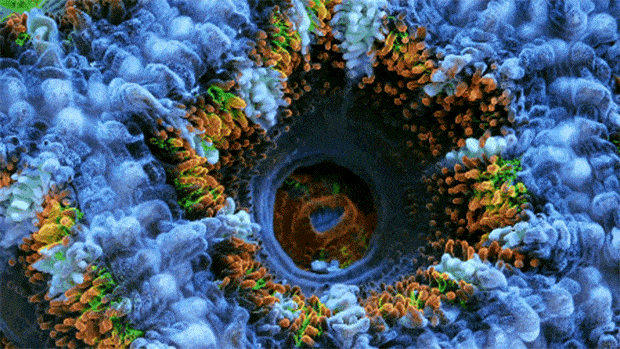
Coral reefs consist of huge numbers of individual coral polyps – soft-bodied, invertebrate animals – linked by tissue. The Great Barrier Reef is an interlinked system of about 3000 reefs and 900 coral islands, divided by narrow passages, just beneath the surface of the Coral Sea.Spanning more than 2000 km and covering an area of some 350 000 sq km, it is the largest living structure on Earth and the only one visible from space. But this fragile coral colony is beginning to crumble, battered by the effects of climate change, pollution and manmade disasters.

5. There are 8 times as many atoms in a teaspoonful of water as there are teaspoonfuls of water in the Atlantic ocean
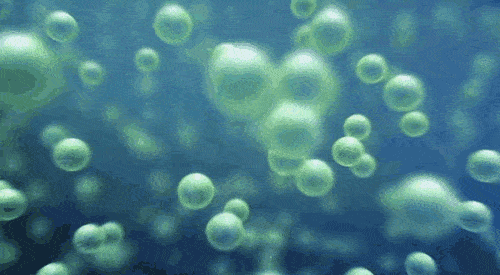
A teaspoon of water (about 5 mL) contains 2×1023 water molecules, but each water molecule is comprised of 3 atoms: two hydrogen and one oxygen. Moreover, if you’d laid down end to end each water molecule from a teaspoon full you’d end up with a length of 50 billion km or 10 times the width of our solar system.

6. The average person walks the equivalent of five times around the world in a lifetime
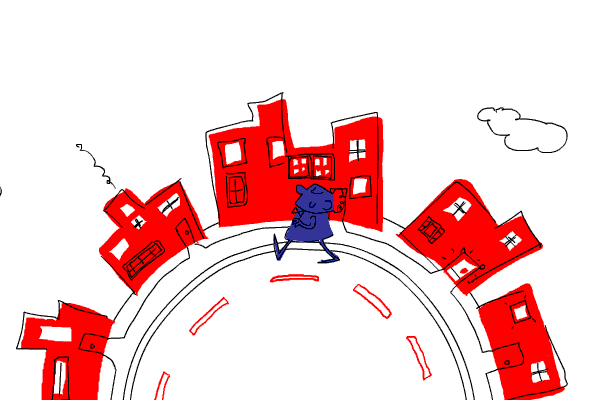
The average moderately active person take aound 7,500 step/day. If you maintain that daily average and live until 80 years of age, you’ll have walked about 216,262,500 steps in your lifetime. Doing the math; the average person with the average stride living until 80 will walk a distance of around 110,000 miles. Which is the equivalent of walking about 5 times around the Earth, right on the equator. (image source)

7. When Helium is cooled to almost absolute zero (-460°F or -273°C), the lowest temperature possible, it becomes a liquid with surprising properties: it flows against gravity and will start running up and over the lip of a glass container!
We all know helium as a gas for blowing up balloons and making people talk like chipmunks, but what most people don’t know is that it comes in two distinct liquid states, one of which is borderline creepy. When helium is just a few degrees below its boiling point of –452 degrees Fahrenheit (–269 degrees Celsius) it will suddenly be able to do things that other fluids can’t, like dribble through molecule-thin cracks, climb up and over the sides of a dish, and remain motionless when its container is spun. No longer a mere liquid, the helium has become a superfluid—a liquid that flows without friction.
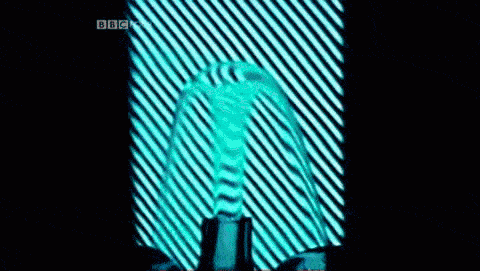
“If you set [down] a cup with a liquid circulating around and you come back 10 minutes later, of course it’s stopped moving,” says John Beamish, an experimental physicist at the University of Alberta in Edmonton. Atoms in the liquid will collide with one another and slow down. “But if you did that with helium at low temperature and came back a million years later,” he says, “it would still be moving.

8. If Betelgeuse would explode transiting from the red super giant stage to supernova then our sky would light continuously for two months. It can happen anytime, within a couple of thousand years, tomorrow or even now

Betelgeuse lies some 430 light-years from Earth. Yet it’s already one of the brightest stars in Earth’s sky. The reason is that Betelgeuse is a supergiant star – the largest kind of stars in the Universe. Betelgeuse has a luminosity about 10,000 times that of the Sun and its radius is calculated to be about 370 times that of the sun. If it were positioned at the center of our sun, its radius would extend out past the radius of Mars. Because it’s near the end of its lifetime, Betelgeuse is likely to explode into a supernova.

9. An individual blood cell takes about 60 seconds to make a complete circuit of the body
You have about 5 litres of blood in your body (at least most people do) and the average heart pumps about 70 ml of blood out with each beat. Also, a healthy heart beats around 70 times a minute. So, if you multiply the amount of blood that the heart can pump by the number of beats in a minute, you actually get about 4.9 litres of blood, which is almost your whole body’s worth of blood. In just a minute, the hearts pumps the entire blood volume around your body.
Human Body Facts
| By Unknown
- The brain uses over a quarter of the oxygen used by the human body. More human brain facts.
- Your heart beats around 100000 times a day, 36500000 times a year and over a billion times if you live beyond 30. More human heart facts.
- Red blood cells carry oxygen around the body. They are created inside the bone marrow of your bones. More blood facts.
- The colour of a humans skin is determined by the level of pigment melanin that the body produces. Those with small amounts of melanin have light skin while those with large amounts have dark skin. More skin facts.
- Adult lungs have a surface area of around 70 square metres! More lung facts.
- Humans have a stage of sleep that features rapid eye movement (REM). REM sleep makes up around 25% of total sleep time and is often when you have your most vivid dreams. More eye facts.
- Most adults have 32 teeth. More teeth facts.
- The smallest bone found in the human body is located in the middle ear. The staples (or stirrup) bone is only 2.8 millimetres long. More ear facts.
- Your nose and ears continue growing throughout your entire life. More nose facts.
- Infants blink only once or twice a minute while adults average around 10.
- As well as having unique fingerprints, humans also have unique tongue prints.
- The left side of your body is controlled by the right side of your brain while the right side of your body is controlled by the left side of your brain.
- Antibiotics are only effective against bacteria, they won't help in fighting off a virus.
- It takes the body around 12 hours to completely digest eaten food.
- Your sense of smell is around 10000 times more sensitive than your sense of taste. More senses facts.
2010 - Science | The Way Of Life is proudly powered by Blogger
Blogger Template created by Anshul
Design By Templatelite.com
Blogger Template created by Anshul
Design By Templatelite.com












